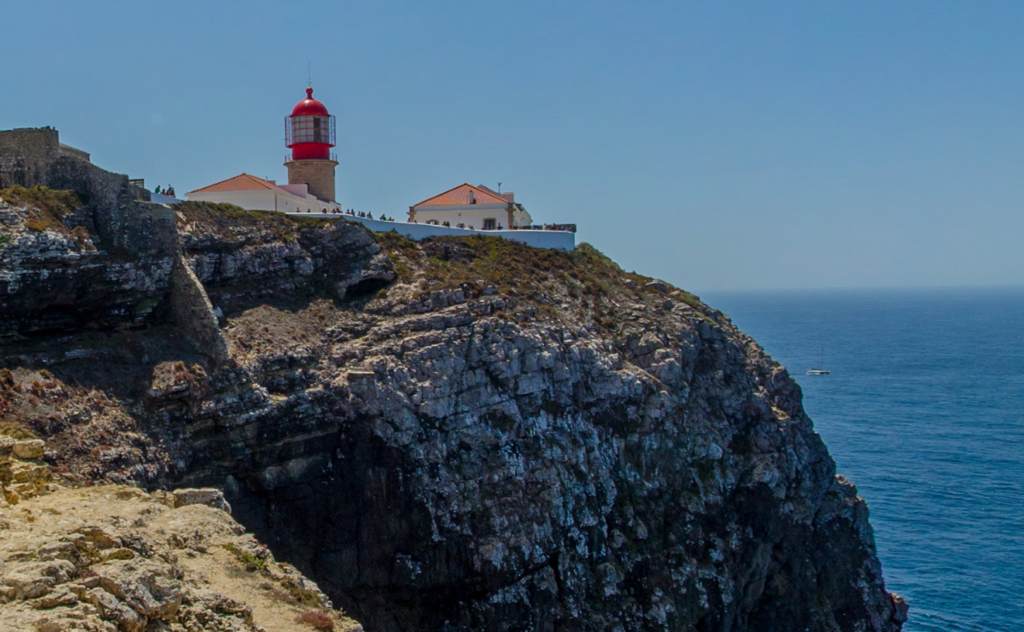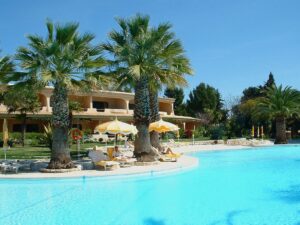
Cabo de São Vicente (the Cape of Saint Vincent) is the most southwesterly point of Europe. This wind-blasted and storm-pounded headland was considered the end of the world, up until the 14th century. The cliffs rise 60 meters from the wild waves of the ocean, where one of Europe’s brightest lighthouses guards the busy shipping lines high above that can be seen also 60 miles away.
The place was founded and constructed by the plans of Henry the Navigator, the father of Portugal’s Discoveries in the 15th century who supposedly spent much of his time based here planning voyages that mapped and explored the unknown regions of western Africa and the far India. Cabo de São Vicente is a wild, windswept, and remote landscape, and tourists who visit won’t be disappointed.
The lighthouse was built in 1846 on the old ruins of a Franciscan monastery to pay homage to Saint Vicente, whose bones were reputedly found in the cliffs and to whom the headland was also named. Finally, his bones were moved to Lisbon in 1147 as part of populous propaganda activity to bolster the Christian conquest of Portugal.

The destructive earthquake in 1755 badly damaged the monastery and this was never repaired. The statue of Saint Vincent was moved to the church of Nossa Senhora da Graça in Sagres.
How to get to Cabo de São Vicente
Cabo de São Vicente lies 6 km to the west of Sagres and 40 km from Lagos. From both towns driving is the easiest method to reach Cabo de São Vicente. The route from Lagos follows the major N125 then N268 towards Sagres. From Sagres, the beautiful coastal road leads there.
Cabo de São Vicente can be reached also by public transport from Sagres and Lagos, the bus service is operated by Vamus. Always check times/prices for season variations.








